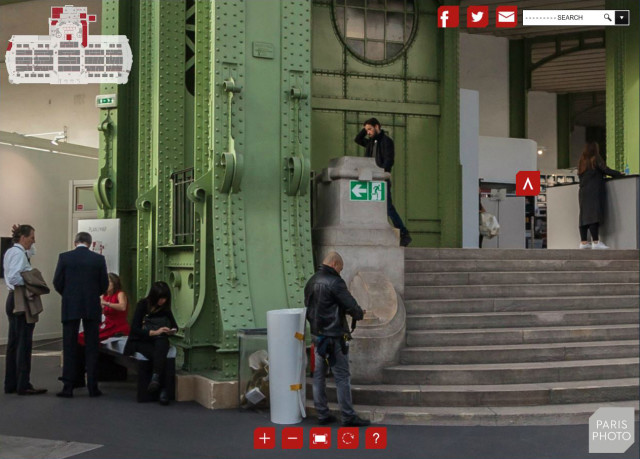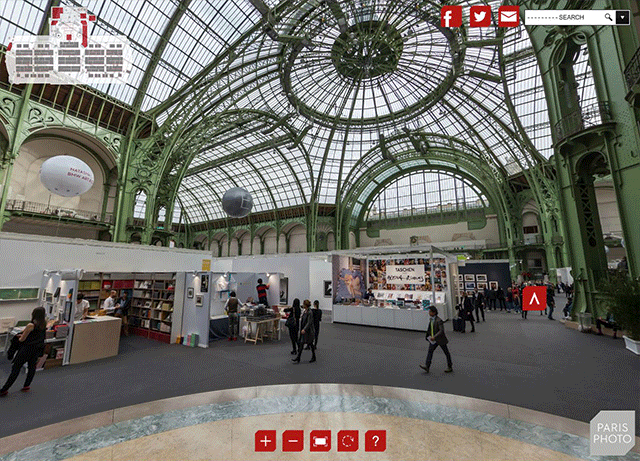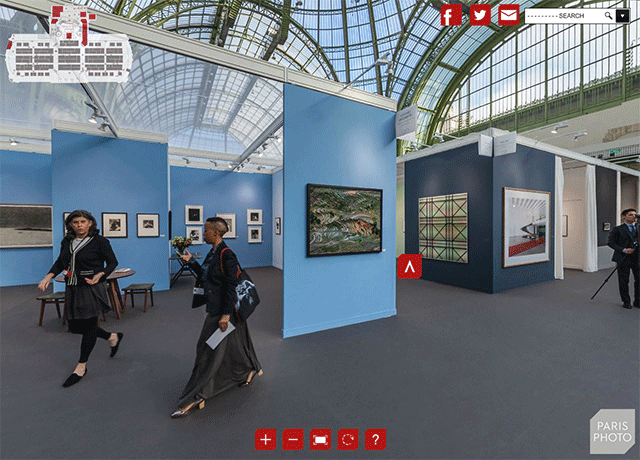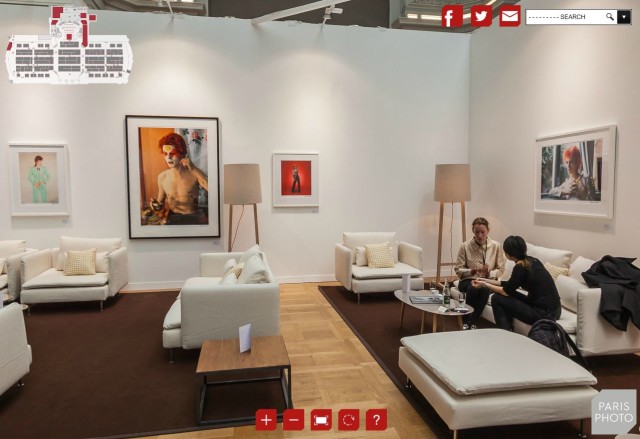Last week, many denizens of the art world found themselves in Paris for the annual Paris Photo art fair, one of the largest and most important events in contemporary photography. Following Friday night’s terrorist attacks, the Grand Palais was forced to shutter its doors for security concerns. AFC alumnus Matthew Leifheit, who had work featured in Foam’s Talent exhibition, was one of the thousands who flew to Paris for the event, and sent us this account:
I went down the first two aisles of Paris Photo on Friday and, overwhelmed, decided I’d have to come back the next day to tackle the rest. Soon after the attacks happened, I began seeing Instagrams by dealers who had gathered in the Grand Palais the following morning to find that the fair was closed by order of the government. Later that day, news arrived to exhibitors via email that the fair would not reopen Sunday morning. Offprint, Paris Photo’s publishing counterpart, had called off all of their events immediately following the attacks. Of course everything should be cancelled, I thought. That shouldn’t even be a question. These kind of world tragedies have a way of making everything else seem so trite. But then, as I began to think about it more, I wondered about the smaller galleries who might be month-to-month on their rent, and especially small publishers who depend on these kind of events to stay afloat. Should these horrible events be allowed to cause further negative repercussions? Clearly, horrible aftereffects in the wake of a tragedy like this are unavoidable.
Although the fair was only open for one day, it can still be experienced online, through Paris Photo’s virtual tour. On November 17th, the fair’s organizers launched the online simulation, along with the following statement:
Due to the tragic events in Paris November 13th, the Grand Palais made the difficult decision to close its doors to the public Saturday morning, leaving our loyal audience of collectors and photography lovers deprived of two full days to meet and share around their commun passion, photography in all its forms.
The Fair, along with its partner Sisso, have decided to offer a unique view of the interior of the Grand Palais, devoid of visitors, yet still full of thousands of artworks.

Two photographs caught my eye at Pace/MacGill’s booth. Unfortunately, the interface doesn’t provide information about the individual artworks or artists.
Curious, I spent yesterday wandering the surreal virtual space—awkwardly navigating the eerily empty-yet-tense Grand Palais. In contrast to born-digital online art exhibitions, such as the Digital Museum of Digital Art within The Wrong Biennale or The VIP Art Fair, the experience of “visiting” Paris Photo feels uncanny, often frustrating, and occasionally poignant. The fair was obviously intended to be experienced IRL, but was driven online as a result of reality’s dangers.
The website’s quality and navigation is similar to Google, and I thought immediately of Jon Rafman’s “The Nine Eyes of Google Street View“:
With its supposedly neutral gaze, the Street View photography had a spontaneous quality unspoiled by the sensitivities or agendas of a human photographer. It was tempting to see the images as a neutral and privileged representation of reality—as though the Street Views, wrenched from any social context other than geospatial contiguity, were able to perform true docu-photography, capturing fragments of reality stripped of all cultural intentions.
And here, the impassive gaze of the all-seeing eyes captures art, architecture, and humanity without hierarchical or emotional consideration. There’s something profound about a photography-focused fair freezing this moment in time in its totality—it’s impossible to see these images without thinking about the violence that necessitated their creation. Many of the pensive-looking gallerists, art handlers, and other fair personnel going about deinstallation were undoubtedly experiencing one of the worst days of their lives—now unwittingly documented and re-playable.
The act of moving through the space recalls a first-person role playing game, or perhaps piloting a drone or surveillance—all unfortunate associations with “the war on terror” and its security culture. I can’t think of another recent tragedy that played out as vividly—and contentiously—in real time online as Friday night’s attacks. Viewing the art fair in this context is unnerving, not because there are overt indicators that an act of violence had just occurred, but because it presents a glimpse of what normalcy might have looked like in Paris. Without knowing the backstory, the mostly-empty Grand Palais might not seem so strange.
That being said, much of the work on display in Paris last week looked great. The cinematic remove might have actually improved the presentation of a few pieces, such as Douglas Gordon’s installation presented by Collezione Enea Righi (below). The distortion and forced-perspective of the surrogate digital gaze lends a dizzying, disorienting quality to the act of viewing this work—enhancing what was likely the original intent.
Other, already powerful images became even stronger when narrativized within the virtual tour and the events preceding it. I immediately recognized Hrair Sarkissian’s “Homesick” series in Kalfayan Galleries’ booth. When I first saw Sarkissian’s work at Art Basel Miami Beach last year, I was incredibly moved. The artist created a scale model of his former apartment building in Syria, where his parents still live. He then documented himself destroying the structure with a sledgehammer, slowly reducing it to the all-too-familiar rubble that’s come to characterize the nation in the global collective imagination. Seeing it now, it feels dismally fitting that access to this home, or at least it’s image, has been twice threatened by the spectre of ISIS.
Panning to the left of “Homesick”, a triptych of altered New York Times front pages from Panos Tsagaris displays images of riot police and civil unrest, their context obscured by gold leaf. It’s a strong pairing, ominously appropriate for its time/place/non-place. And here, in this now-virtual art fair, these representations of violence are juxtaposed with the gallerist’s non-art-object bags packed and ready to go on the booth’s floor.








Comments on this entry are closed.
{ 1 trackback }